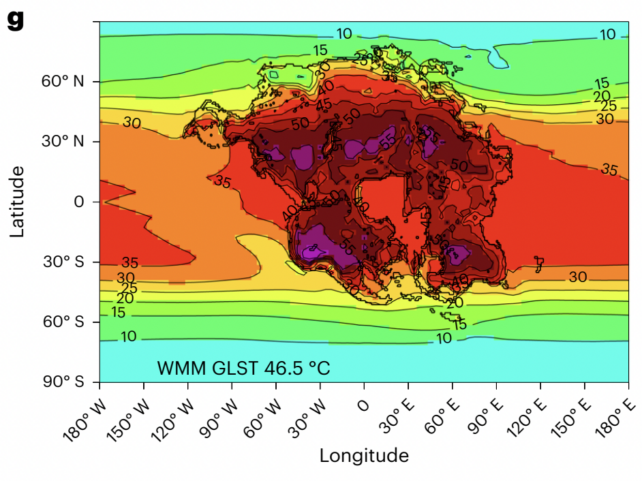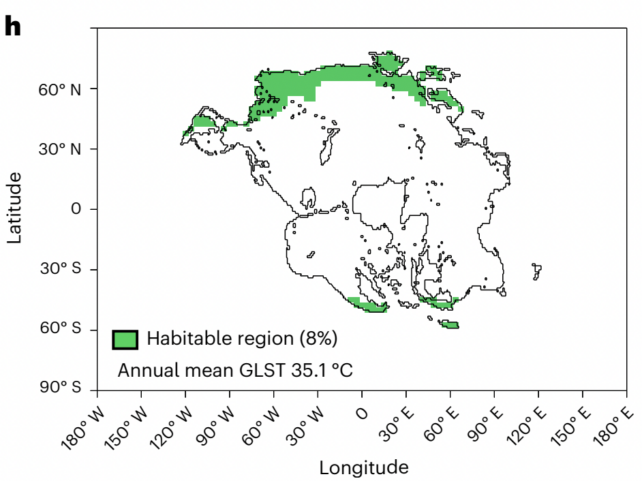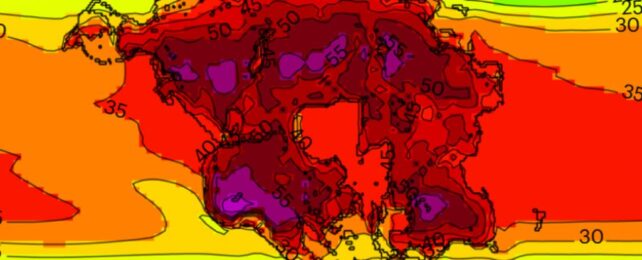For more than 300 million years, mammals of all shapes and sizes have flourished here on Earth.
Today, this highly successful class of animal exists in nearly every major habitat on land, having persisted through massive climate fluctuations and several mass extinctions.
It's hard to imagine a world without them. Yet a new study led by researchers from the University of Bristol suggests the shifting of continents will eventually spell doom for virtually any and all warmblooded, milk-producing creatures.
Recent models predict Earth's greenhouse gas effect could reach a tipping point that renders most of the planet "uninhabitable to mammalian life" when the next supercontinent – a landmass some call Pangea Ultima – forms in the coming 250 million years or so.
"The formation and decay of Pangea Ultima will limit and… ultimately end terrestrial mammalian habitability on Earth by exceeding their warm thermal tolerances, billions of years earlier than previously hypothesized," the researchers behind the model write.
Currently, experts understand very little about what happens to Earth's climate when its continents smoosh together into one big landmass, a world-changing event that has happened on more than few occasions in our planet's history.
Earth's last supercontinent, called Pangea, came about roughly 310 million years ago and is the one that scientists know most about.
Using Pangea as a case study, an international team of researchers from the US, UK, China, and Switzerland tried to predict what will happen to Earth's climate during the formation of the next supercontinent.
Their results suggest that in the distant future, things are going to become a lot hotter… like, unbearably hot.
Not only will the Sun emit around 2.5 percent more radiation, the formation of a supercontinent will drastically alter the global climate system, possibly drying out huge swathes of land and trapping more carbon dioxide in the atmosphere.
During the time of the first Pangea, between 334 million years ago and 255 million years ago, atmospheric carbon dioxide levels rose from about 200 parts per million to as high as 2,100 ppm. This created extreme temperatures around 10 °C more than the present-day global mean.
To put that in perspective, current atmospheric carbon dioxide levels sit around 416 ppm relative to preindustrial levels.
If, in the future, atmospheric carbon dioxide spike past 560 ppm once again, even for just a century, it could lead to a mass extinction event on par with the 'Big 5'.
Unfortunately, models suggest this is likely to happen when Pangea Ultima forms, as plate tectonics create climate feedbacks and altered weather systems. If less fresh water is carried to interior regions, for instance, it could dry out forests and turn inland carbon sinks into carbon taps.
Modeling the worst case scenario, researchers predict that Pangea Ultima could result in a warm month mean temperature of 46.5 °C (115.7 °F).

Judging by today's knowledge of critical heat stress among mammals, those temperatures will likely be prohibitive for the vast majority of known species.
"At 280 ppm, most of the tropics become uninhabitable," the researchers explain, "and by 1,120 ppm this extends through the mid to high latitudes"
In fact, at 1,120 ppm, models suggest no more than 8 percent of Pangea Ultima will continue to support mammalian life. At this drastic stage, just a few high-latitude refuges will be left, as can be seen in the image below.

Burrowing nocturnal rodents might still survive in this region, as could "highly specialized migratory mammals".
But even mammals that travel from habitat to habitat will face perilous conditions as continent-wide deserts form throughout Pangea Ultima, making travel through these arid sections largely 'impractical'.
"Although we cannot discount evolutionary adaptation to heat and cold stress, recent studies have shown that mammalian thermotolerance upper limits are conserved through geologic time and have not increased during past rapid or slower warming events," the researchers write.
Given that historical context, there's little chance that mammals will evolve fast enough to cope with Earth's next supercontinent.
All good things must come to an end.
The study was published in Nature Geoscience.
